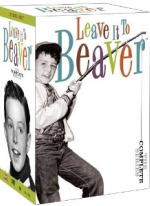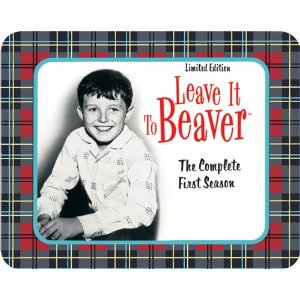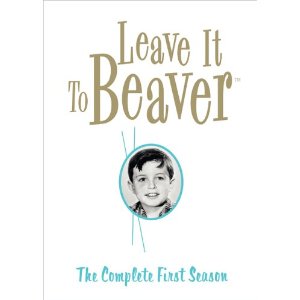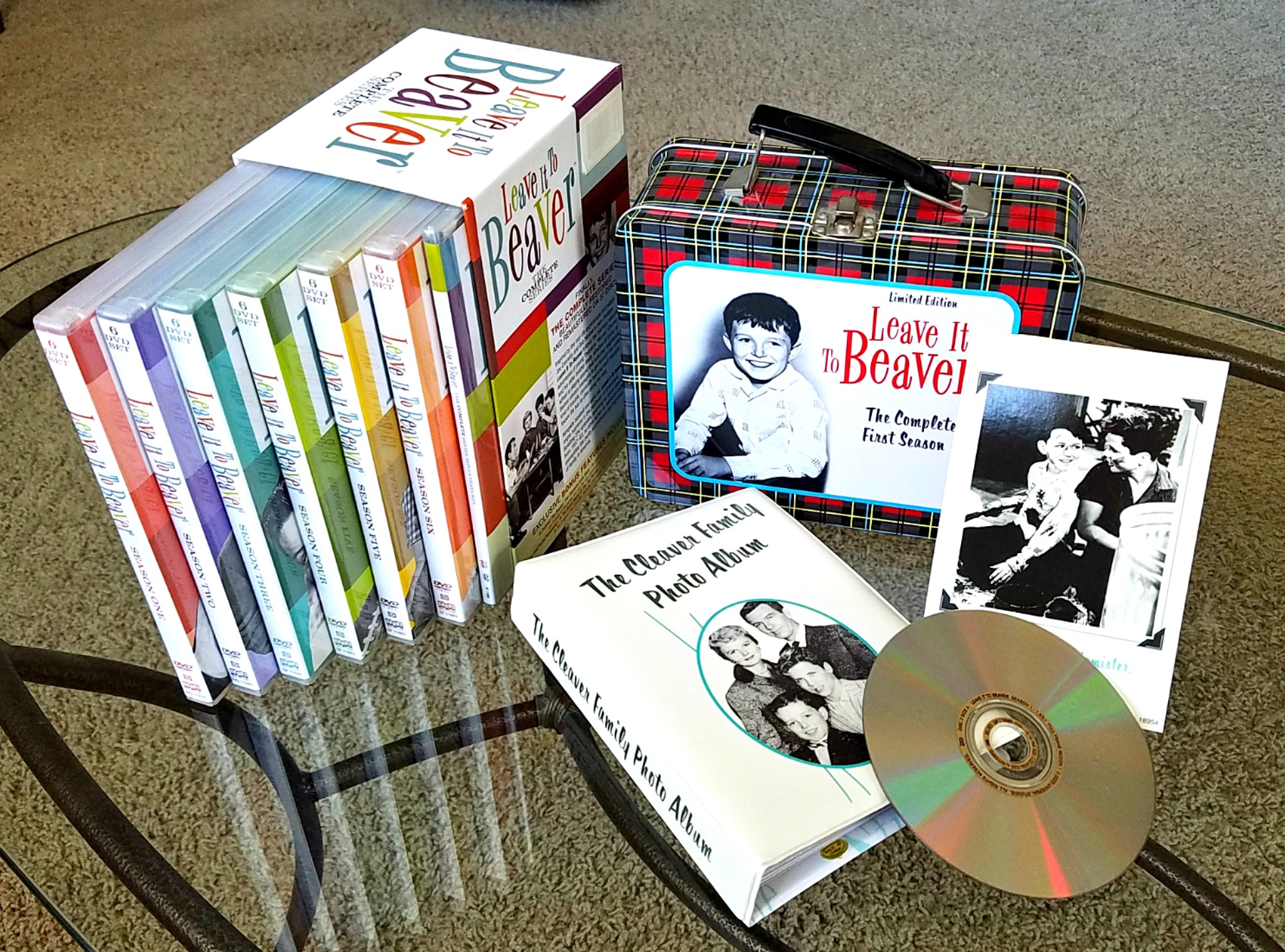In 2005 Universal Studios released the first season of “Leave it to Beaver” on DVD with an optional collectible lunchbox, followed in 2006 by the second season.
 But the remaining four seasons were never released until now. Shout! Factory struck a deal with Universal and this week released the entire “Leave it to Beaver: The Complete Series” ($199.99) in a 37-disc boxed set including all 234 black-and-white episodes and a bonus disc featuring several hours of extras.
But the remaining four seasons were never released until now. Shout! Factory struck a deal with Universal and this week released the entire “Leave it to Beaver: The Complete Series” ($199.99) in a 37-disc boxed set including all 234 black-and-white episodes and a bonus disc featuring several hours of extras.
Seasons 3 & 4 are also available separately for $39.97 each.
Alright, this is not HiDef Blu-ray but all episodes have been restored and remastered so that when viewed on an upscaling Blu-ray player and HiDef TV each looks remarkably crisp, clean, and more vivid than you have ever seen them. And since this is such an iconic and evergreen series, frequently cited as one of the all-time best sitcoms, it’s worth noting anyway. The series employed a then-fresh approach of viewing day-to-day suburbia family life, including tackling some remarkably serious topics, through the eyes of the kids. The collection of characters, including wise-cracking Eddie Haskell, each felt very familiar, and parents Ward and June were mentors for the entire neighborhood, offering wisdom and compassion while struggling with their own challenges of parenting and not afraid to admit their missteps.


As with all older TV series, watching on DVD and Blu-ray is the only way for purists to see each episode in its entirety, including opening titles and the full closing credits, which is particularly significant for older series such as this when half-hour episodes ran nearly 26 minutes. As much as four-minutes to eight-minutes is typically cut out of each show in syndicated reruns these days to make room for more than twice as much commercial time, and closing credits are truncated and squeezed so that they are virtually unreadable.
Shout! Factory has gone to the trouble to create easy-to-read 12-page printed episode guide pamphlets with each season set and has gone to far more work than Universal in finally offering fans some fun extras. In addition to the original series pilot included in Universal’s Season One set, featuring different actors in the roles of Ward and Wally Cleaver, the bonus disc also includes:

* What looks like a typical episode of the series but one that is produced by The U.S. Treasury Department as blatant propaganda to promote U.S. Savings Bonds (a similar episode is included on Shout!’s “Father Knows Best” series set).
* Several fun original ABC promos.
* A large color fold-out re-creation of a rare Leave it to Beaver “Money Maker” board game on heavy-stock paper that offers alternative household items to use as game pieces.
* 90-minutes of cast interviews from 2005:
— A 75-minute collection of interviews of each other about the series in 2005 by Jerry Mathers (Beaver), Tony Dow (Wally), Barbara Billingsley (June), and Brian Levant (creator of the 1983 “Still the Beaver” TV reunion movie and sequel Disney Channel/TBS series — stay away from his 1997 theatrical remake; it’s awful).
— A similar 10-minute featurette with Ken Osmond (Eddie Haskell) and Frank Bank (Lumpy) discussing their memories of life during production of the series.
— A 2-minute interview with theme song composer Dave Kahn while in his 90s.

Although there are some anecdotes in the interviews that may be new to fans – the first two seasons (when the Cleavers lived in the less familiar house on Maple Drive) were shot at the then-Republic studios in Studio City (now CBS Studios at Radford and Ventura); later when shooting on the Universal lot the young boys occasionally rubbed elbows with the likes of Steve McQueen – these interviews not only appear somewhat unprofessionally produced (perhaps like home movies?), but also feel a little rehearsed and not conversational, especially the overdone remembrances and amateur-ish shtick by Osmond and Bank. And the interview with the aged Kahn is so forced and unproductive that it’s uncomfortable.
Slightly more entertaining and spontaneous are Skokus Internet radio’s “Stu’s Show” interviews from earlier this year of cast members Mathers, Dow, Osmond, and Bank included on one disc in each season set.
Launched on the relatively new ABC TV network that was less than 10 years old at the time, “Leave it to Beaver” never ranked among the 25 top-rated shows of the week during its six-year run from 1957 – 1963. But the sitcom went on to become one of the most beloved and popular shows in decades of syndicated reruns enjoyed by generations of viewers, most notably as the backbone of Ted Turner’s local Atlanta independent TV channel 17 in the 1970s when he was one of the first to nationally distribute a network – then renamed TBS Superstation – specifically for cable TV.
Even with only six seasons, the 39 original episodes produced each year represents the equivalent of about 10 – 12 seasons for some modern TV series.
— By Scott Hettrick


Even with only six seasons, the 39 original episodes produced each year represents the equivalent of about 10 – 12 seasons for some modern TV series.